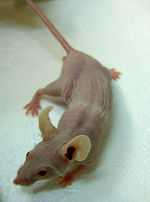Difference between revisions of "Category:Primary Immunodeficiency"
Jump to navigation
Jump to search
| Line 8: | Line 8: | ||
[[Primary Innate Immunity Deficiencies]] | [[Primary Innate Immunity Deficiencies]] | ||
| + | [[Primary Adaptive Immunity Deficiencies]] | ||
| − | |||
| − | |||
| − | |||
| − | |||
| − | |||
| − | |||
| − | |||
| − | |||
| − | |||
| − | |||
| − | |||
| − | |||
| − | |||
| − | |||
| − | |||
| − | |||
| − | |||
| − | |||
| − | |||
| − | |||
| − | |||
| − | |||
| − | |||
| − | |||
| − | |||
| − | |||
| − | |||
| − | |||
| − | |||
| − | |||
| − | |||
===Laboratory Examples of Severe Combined Deficiency=== | ===Laboratory Examples of Severe Combined Deficiency=== | ||
Revision as of 13:52, 12 August 2010
- Primary immunodeficiencies may affect either the innate immune system or the adaptive immune system
- They are categorised by either the type or the developmental stage of the cells involved
- Lymphoid cell disorders affect T cells or B cells (or both)
- Myeloid cell disorders affect phagocytic function
- The severity of the immunodeficiency depends on at which stage in development the problem occurs
- E.g. Defects early on in development will affect the entire immune system
- T cell deficiencies can affect both the cell-mediated and humoral response as T cells play a central role in the immune system
Primary Innate Immunity Deficiencies Primary Adaptive Immunity Deficiencies
Laboratory Examples of Severe Combined Deficiency
- Knock-out mice
- E.g. Gene coding for CD4, CD8, IL-10 removed
Subcategories
This category has the following 2 subcategories, out of 2 total.
Pages in category "Primary Immunodeficiency"
This category contains only the following page.
